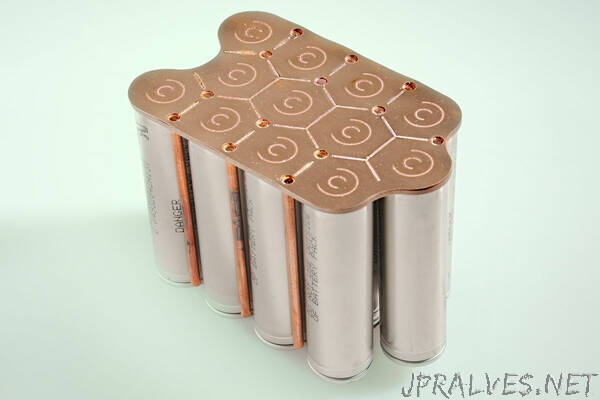
“No e-mobility without laser technology: this is one of the claims of LASER World of PHOTONICS 2019. In keeping with the theme of this year’s fair, the Fraunhofer Institute for Laser Technology ILT will be using Laser-Based Tape-Automated Bonding (LaserTAB) to demonstrate how even the most diverse battery cells and power electronics can be combined quickly, reliably and efficiently using robot-assisted laser micro welding. At the Fraunhofer joint booth 431, hall A2, visitors can admire the electric racing car “eace05” of the Ecurie Aix - Formula Student Team, RWTH Aachen. An excellent example for the use of laser technology in electromobility, containing laser-welded batteries as well as laser-cut CFK-components.
Fueling the switch to e-mobility is far from simple – but fortunately the combined skills of industry and research are up to the challenge! That was the conclusion drawn by participants at the first Laser Symposium on Electromobility (LSE 2019) held by Fraunhofer ILT in February 2019. The main feature of the event was a series of lectures given by experts from industry and research that focused on new laser-based manufacturing techniques for the production of battery modules and packs.
Laser-based solutions for joining processes
Participants expressed particular interest in joining technology, an aspect of battery production that rarely gets the attention it deserves. Further topics covered at the LSE included thermal control of the joining process, appropriate designs, suitable packing densities, and configuration of the electrical connection technology. The symposium also addressed the role of process monitoring in the context of Industry 4.0, a method that can be used to check the reliability of the electrical connections between cells and the overall stability of the processes involved.
Combination of optics, joining technology and process monitoring
For experts in the field, however, the key issue is how these solutions work in practice – and the leading international trade fair LASER World of PHOTONICS offers the perfect opportunity to answer that question. Experts from the Aachen-based Fraunhofer ILT will be showcasing a process to weld battery cells using an industrial robot and demonstrating how this process can be monitored. They will be presenting their wealth of expertise in Laser-Based Tape-Automated Bonding (LaserTAB), a process that involves a clever combination of robotics and a laser scanner as well as new optics and process monitoring systems developed in-house at Fraunhofer ILT. At the heart of the new system is the LBR iiwa sensitive lightweight robot developed by Kuka Roboter GmbH from Augsburg. LBR stands for Leichtbauroboter (German for lightweight robot), iiwa for intelligent industrial work assistant, and this new “sensitive” robot has been specifically designed to help humans and robots work closely together.
Sensitive lightweight robot boosts reliability of joining processes
Sensors on the collaborating robot – Cobot for short – ensure that the optics maintain the focal length required for the process. The Cobot “feels” when the spacer touches the surface and begins the welding process. That enables it to keep the lens at a constant distance from the weld. In Munich, researchers from Fraunhofer ILT will be showcasing concrete applications such as the welding of prismatic, cylindrical and pouch cells. The Aachen-based scientists will also be presenting a technology demonstrator that shows how to connect a copper contact to a cylindrical cell using the LaserTAB process. For this purpose, Fraunhofer ILT has produced a specially shaped copper connector using laser powder bed fusion. This connector illustrates the tremendously high geometric degrees of freedom that can be achieved with the skillful use of metallic 3D printing techniques.”
